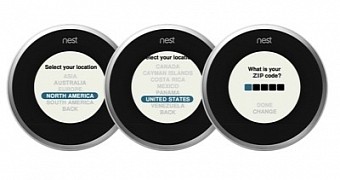The NEST Thermostat is a device that allows you to set your home temperature from wherever you travel. It also has the ability to learn weather data and become more efficient over time thanks to certain algorithms that give it the ability to learn from experience.
There was a problem with this for a while: the way the temperature/time graph was set up and the reliance on knowing the geographical location made it a chore to use until now.
Mostly because no countries were supported outside of the US, Canada, Austria, Belgium, France, Germany, Ireland, Italy, Luxembourg, Netherlands, Spain, and the UK.
Kind of counterintuitive for a device that sells in many other regions. There is a hack that people could try, but only if they had a custom setup and low/medium Linux experience.
Now, though, the NEST Smart Thermostat has received an update that fixes the problem, allowing you to program the temperature/time graph and use the Autoaway function.
How the NEST Thermostat works
The device auto-detects the geographical location during setup, based on the IP address. You can, of course, choose differently if the detection function somehow gets the location wrong.
The thermostat should be able to properly detect it though, down to the country, city, and ZIP or postal code in some places. You can input the latter two manually if an issue arises.
As you can see, the location list from the manual input section now includes all countries where the item is up for sale, instead of the list mentioned before.
That said, once the device has been set up, it will automatically get weather forecast data and properly control your home's temperature.
So if you leave home and forget to change the temperature, the NEST will be able to learn your preferences depending on how often you control it via phone. As you come and go from home, it will learn your schedule. Depending on how often you use it to change temperature settings, it will figure out your preferences. And if you leave it alone for a while, it will deduce that the current settings are the ones that make you comfortable.
All that data will be used to make sure the NEST works as efficiently as possible, so that it might eventually lower heating and cooling bills by up to 20% once enough time has passed for it to program itself most efficiently.
According to the people who invented it, the challenge was giving the device all the needed autonomy while still allowing the owners to feel in control. Obviously, not finding your country in the geolocation zone went against that goal, which is why we're glad that fix we mentioned before won't be needed anymore.

 14 DAY TRIAL //
14 DAY TRIAL //